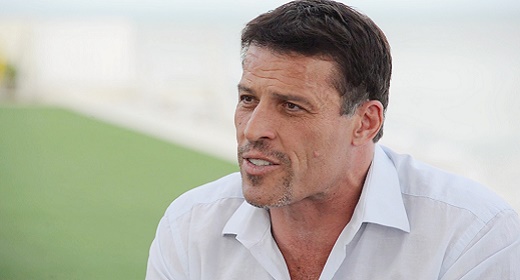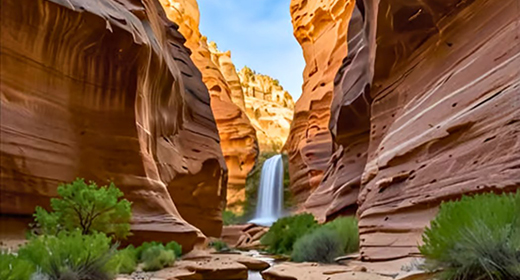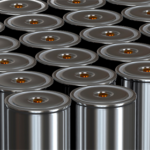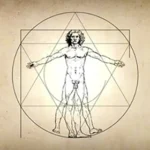About Kundalini Yoga (from lectures and conversations with Yogi Bhajan, 1969)…
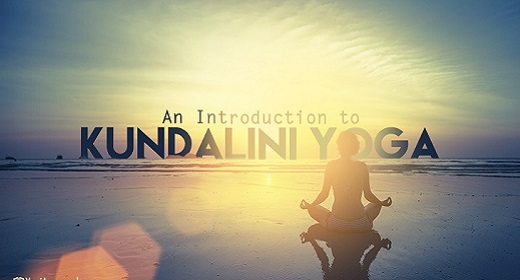
“I have recognized, with the blessing of my Master, that it is possible to be healthy, to be happy, and to be holy while living in this society; but you must have energy so that your dead computer may live and pass on the signal to you and compute all that you want to do in this society. We call this energy, in the old science, the kundalini, which has been blocked in the Mooladhara, the lowest of all chakras or lotuses.
These are all imaginary things. Great big books have been written on them and these books also misled me for many years. Still I learned about it, and all these chakras (or circles as we call them in English), have put us in so many circles that we do not come out of it and we reach nowhere. There is a way we should set our computer to be in direct contact with Him, the Biggest Computer, and all things must then work automatically. That cannot work until the Kundalini, the spiritual nerve, breaks through the blockage at the Mooladhara, and thus, travels up and reaches the stage so that you may have Superconsciousness in Consciousness.
You must generate the pressure of the praana and mix it with the apaana, and thus, when the two join together, you generate heat in the praanic center. With this heat of the praana, you put a pressure or charge on the Kundalini, the soul nerve, which is coiled in three and a half circles (“kundal” means “the curl of the hair of the beloved,” it does not mean snake or serpent) on Mooladhara. This will awaken it so that it may pierce through the imaginary chakras and pass ultimately through Jalandhara Bandha (neck lock—the final blockage in the spine before the energy reaches the head).
Now, let me define a few terms. Praana is the life forte of the atom. Apaana is elimination or the eliminating force. These are two forces, positive and negative, in us which are governed by pingala and ida; that is, right and left. When we join these two energies under the power and the science of Kundalini Yoga, we mix the praana with the apaana and, under that pressure, bring the Kundalini up. When it passes through the central nerve or shushmuna, it reaches the higher chakras or lotuses, and thus man can easily look into the future. His psychic power becomes activated. He can know his total surroundings and he is a blessed being.
After one inhales the praana deep (down to the Navel Point) and pulls the apaana with the root lock (up to the Navel Point), praana and apaana mix at the Navel Center. This is known as Nabhi Chakra at the fourth vertebra. Heat is felt during the Kundalini awakening and that heat is the filament of the shushmuna or central spinal channel being lit by the joining of praana and apaana. Below the Nabhi Chakra, the energy leaves the navel and goes to the rectum (or lower center) and then it rises. This is called Reserve Channels. It relates to your Astral Body.
Then, there are six more chakras through which the Kundalini must rise—and it will happen all at once. Once you have raised it, that’s it. The hardest job is to keep it up, to keep the channels clean and clear.
From the rectum to the vocal cord is known as the silver cord. From the neck to the top of the head is the passage. From the third eye to the pineal gland is the gold cord. To make the energy rise in these cords and passages, you must apply hydraulic locks. You must put a pressure. You live in California? You know how we take the oil out of the ground? Put a pressure and the oil will come out. Your spine is a staircase of energy. 1) Mool Bandh brings apaana, eliminating force, to the navel a fourth vertebra, the central seat of the Kundalini. 2) Diaphragm Lock takes it to the neck. 3) Neck Lock takes it up all the rest of the way.
The pineal gland or seat of the soul, does not work when the tenth gate (top of the head) is sealed, but if the pineal will secrete (when the Kundalini heat comes), your pituitary will act as radar, keeping the mind from negativity.
Yes, Kundalini is known as the nerve of the soul. This is to be awakened. Your soul is to be awakened. When soul gets awakened, there remains nothing. What else?
In the practical reality, these chakras are imaginary and nothing else. This Kundalini is just a Kundalini and nothing else. It is not very important. These praanas and apaanas are just there. Everything is set in us. We lack nothing. We use these terms simply to make the process clear so we can get on with it. It is very simple. After getting myself into the darkness for years together, I found that if I would have known on the first day that it was so easy, I could have saved myself a lot of hassle. When I found out that the Kundalini really can come up like this, I was astonished. It was a surprise to me. I said. “That’s all there is to the Kundalini?” and my Master said, “Yes.”
Keys to Successful Practice
A Successful Experience
Prepare for your practice by lining up all the elements that will elevate your experience: natural fiber clothing and head covering (cotton or linen), preferably white to increase your auric body; natural fiber mat, either cotton or wool; traditionally a sheep skin or other animal skin is used. If you have to use a rubber or petroleum-based mat, cover the surface with a cotton or wool blanket to protect and support your electromagnetic field. Clean air and fresh water also helps support your practice.
Practice in Community
Studying the science of Kundalini Yoga with a KRI certified teacher can enhance your experience and deepen your understanding of kriya, mantra, breath and posture. Find a teacher in your area at the International Kundalini Yoga Teachers Alliance . If you are interested in becoming a teacher of Kundalini Yoga as taught by Yogi Bhajan®, go to Kundalini Research Institute for more information. Aquarian Teacher Trainings take place year-round all over the world!
Breath and Bandhas
Breath
Kundalini Yoga incorporates profound praanayams throughout its practice. Understanding and mastering the breath is an important part of successfully practicing any Kundalini Yoga kriya. We have provided the descriptions of three of the most basic praanayams in the practice of Kundalini Yoga but as you work through the meditations and kriyas in this manual, please read the instructions for the breath carefully.
Long Deep Breath
To take a full yogic breath, inhale by first relaxing the abdomen and allow it to expand. Next expand the chest and finally the collarbones. As you exhale, let the collar bones and chest relax first, then pull the abdomen in completely. The diaphragm drops down to expand the lungs on the inhale and contracts up to expel the air on the exhale. As you inhale feel the back area of the lower ribs relax and expand. On the exhale be sure to keep the spine erect and steady.
Breath of Fire
This breath is used consistently throughout Kundalini Yoga kriyas. It is very important that Breath of Fire be practiced and mastered. In Breath of Fire, the focus of the energy is at the solar plexus and navel point. The breath is fairly rapid (approximately 1-2 breaths per second), continuous and powerful with no pause between the inhale and exhale. This is a very balanced breath with no emphasis on either the exhale or the inhale, but rather equal power given to both.
Breath of Fire is a cleansing breath, renewing the blood and releasing old toxins from the lungs, mucous lining, blood vessels, and cells. It is a powerful way to adjust your autonomic nervous system and get rid of stress. Regular practice expands the lungs quickly.
Cannon Breath
Cannon Breath is a powerful continuous and equal inhalation and exhalation through the mouth, similar to Breath of Fire, but through rounded lips instead of through the nose. Very cleansing, this breath is invigorating, energizing and rejuvenating.
To consolidate the energy at the end of a kriya, many will call for a Cannon Fire exhale, which means we suspend the breath on the inhale and then use a single strong exhale through the mouth like a Cannon.
Bandhas
Bandhas or locks are used frequently in Kundalini Yoga. Combinations of muscle contractions, each lock has the function of changing blood circulation, nerve pressure, and the flow of cerebral spinal fluid. They also direct the flow of psychic energy, praana, into the main energy channels that relate to raising the Kundalini energy. They concentrate the body’s energy for use in consciousness and self-healing. There are three important locks: jalandhar bandh, uddiyana bandh, and moolbandh. When all three locks are applied simultaneously, it is called mahabandh, the Great Lock.
Jalandhar Bandh or Neck Lock
The most basic lock used in Kundalini Yoga is jalandhar bandh, the neck lock. This lock is practiced by gently stretching the back of the neck straight and pulling the chin toward the back of the neck. Lift the chest and sternum and keep the muscles of the neck and throat and face relaxed.
Uddiyana Bandh or Diaphragm Lock
Applied by lifting the diaphragm up high into the thorax and pulling the upper abdominal muscles back toward the spine, uddiyana bandh gently massages the intestines and the heart muscle. The spine should be straight and it is most often applied on the exhale. When applied forcefully on the inhale, it can create pressure in the eyes and the heart.
Moolbandh or Root Lock
The Root Lock is the most commonly applied lock but also the most complex. It coordinates and combines the energy of the rectum, sex organs, and navel point.
Mool is the root, base, or source. The first part of the moolbandh is to contract the anal sphincter and draw it in and up. Then draw up the sex organ so the urethral tract is contracted. Finally, pull in the navel point by drawing back the lower abdomen towards the spine so the rectum and sex organs are drawn up toward the navel point.
Pronunciation Guide
Gurbani is a sophisticated sound system with guidelines for consonant sounds and other rules of the language that are best conveyed through a direct student-teacher relationship. Further guidelines regarding pronunciation are available at Kundalini Reseach Institute .
| Sound | Pronounced As In |
|---|---|
| a | hut |
| aa | mom |
| u | put, soot |
| oo | pool |
| i | fin |
| ee | feet |
| ai | let |
| ay | hay, rain |
| r | flick tongue on upper palate |
Tuning In/How To End
Beginning Your Practice — Tuning In
The practice of Kundalini Yoga as taught by Yogi Bhajan® always begins with tuning-in. This simple practice of chanting the Adi Mantra 3-5 times aligns your mind, your spirit and your body to become alert and assert your will so that your practice will fulfill its intention. It’s a simple bowing to your Higher Self and an alignment with the teacher within. The mantra may be simple but it links you to a Golden Chain of teachers, an entire body of consciousness that guides and protects your practice: Ong Namo Guroo Dayv Namo, which means, I bow to the Infinite, I bow to the Teacher within.

How to End
Another tradition within Kundalini Yoga as taught by Yogi Bhajan® is a simple blessing known as The Long Time Sun Shine song. Sung or simply recited at the end of your practice, it allows you to dedicate your practice to all those who’ve preserved and delivered these teachings so that you might have the experience of your Self. It is a simple prayer to bless yourself and others. It completes the practice and allows your entire discipline to become a prayer, in service to the good of all.
- May the long time sun shine upon you
- All love surround you
- And the pure light within you
- Guide your way on.
- Sat Naam.






